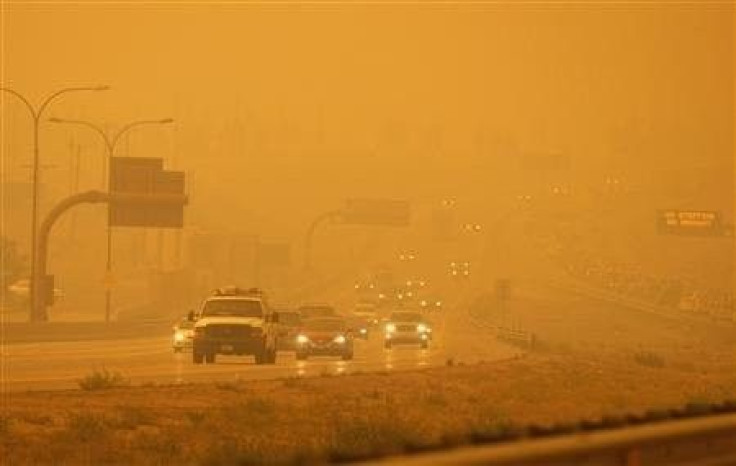Drought Major Factor In Colorado Springs Wildfires

The Colorado wildfires -- such as the Waldo Canyon Fire in the vicinity of Colorado Springs that has killed at least two people, displaced tens of thousands, and destroyed more than 340 homes -- appear to provide evidence that such disasters are getting worse as the years wear on.
Together, the massive infernos are a result of changing weather patterns, including a very serious drought, among other factors.
The Colorado River runs from the Rocky Mountains to the Gulf of California. Along the way, it distributes water into a whole system of tributaries that 30 million Americans rely on not only for their drinking water, but also for power, fishing, and farming. It's a lifeline for much of the U.S. Southwest.
The extreme heat that has given firefighters headaches because it refuses to die down at night is contributing to serious drought concerns centered on the Colorado River. During a recent interview with NPR's Talk of the Nation, Peter McBride, a photographer who produced The Colorado River: Flowing Through Conflict, cited projections that Lake Mead could run dry after 2020.
During the same interview, Sandra Postel, director of the Global Water Policy Project, pointed to population growth in the Southwest as a key contributor to lower levels of water both in the Colorado River and in the river delta.
We're demanding more water than can be supplied, Postel said. It's a very serious issue in this basin.
The extreme drought -- as illustrated by the U.S. Drought Monitor maintained by the National Drought Mitigation Center at the University of Nebraska at Lincoln -- is beginning to threaten crop irrigation and ranchers' herds in the region. The Environmental Defense Fund recently reported on the National Geographic site: Soil moisture is at 5-10%, well below average conditions of 40%. Low soil moisture surely contributed to the Last Chance fire, which burned 45,000 acres in 12 hours on Colorado's eastern plains.
Contributing to the drought and the risk of fire is the number of people who are pushing into areas of the Southwest that were previously either sparsely populated or unpopulated. Along this line, The Washington Post looked at the increased risk of accidents when more smokers, electric wires, and cars penetrate deeper into areas with dense forests.
Among its other effects, the drought kills trees at faster and higher rates than would otherwise be the case. Also threatening the trees are mountain pine beetles, which, as Reuters reported, have been able to survive recent winters because the temperatures have not dipped low enough to exterminate them. The resultant increase of fuel, when combined with high winds, create the perfect conditions for thriving wildfires.
Seventy-eight percent of the Colorado River is dedicated to agriculture. There are so many farms, though, that the outlook for many farmers is grim this year.
Unfortunately, it takes a wildfire season like this one to make many people pay attention to how grim that outlook is for everyone.
© Copyright IBTimes 2024. All rights reserved.











